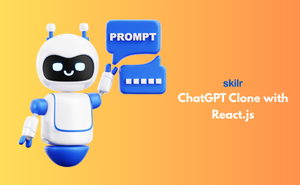👇 CELEBRATE CLOUD SECURITY DAY 👇
00
HOURS
00
MINUTES
00
SECONDS

Building a ChatGPT Clone using React.js enables learners to develop a fully functional AI-powered web app similar to ChatGPT. Using React.js, you can design interactive user interfaces, capture user messages, and process them with AI models to generate responses. This hands-on project helps in understanding the connection between frontend frameworks and AI APIs.
Learners gain practical experience in building responsive, dynamic applications that can communicate with AI. These skills are valuable for developing virtual assistants, AI chatbots, or interactive customer service platforms. This certification combines web development techniques with AI integration to provide a strong foundation for modern web applications.
This exam is ideal for:
Industry-endorsed certificates to strengthen your career profile.
Start learning immediately with digital materials, no delays.
Practice until you’re fully confident, at no additional charge.
Study anytime, anywhere, on laptop, tablet, or smartphone.
Courses and practice exams developed by qualified professionals.
Support available round the clock whenever you need help.
Easy-to-follow content with practice exams and assessments.
Join a global community of professionals advancing their skills.
Yes, integrating AI with React.js adds highly valuable skills.
Yes, connecting AI models to a frontend application is a core part of the certification.
Mainly JavaScript, along with HTML and CSS.
Basic understanding of APIs and asynchronous calls is helpful but not needed.
Intermediate React.js knowledge is recommended, but beginners with guidance can follow along.
E-commerce, education, customer support, healthcare, and finance.
Yes, using platforms like Netlify, Vercel, or AWS.
A web application that mimics the functionality of ChatGPT using AI APIs.
No, basic understanding of AI concepts and APIs is sufficient.
React.js allows building interactive, responsive, and dynamic web interfaces.